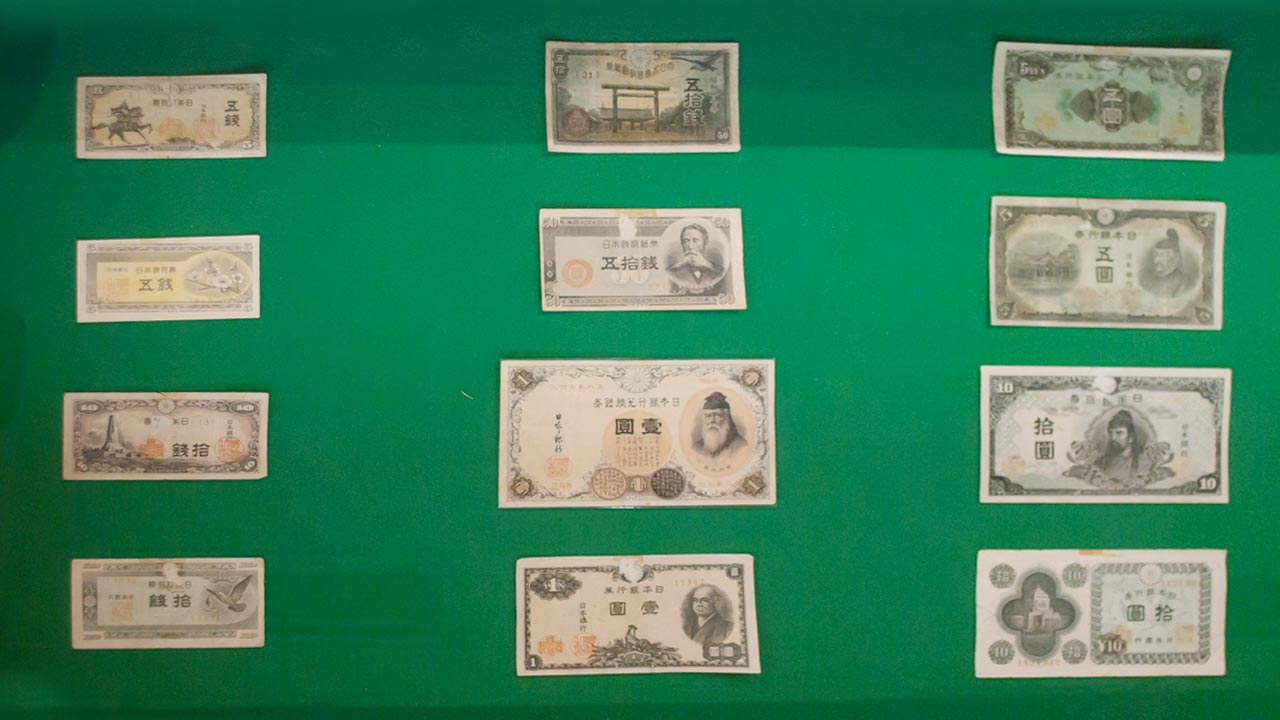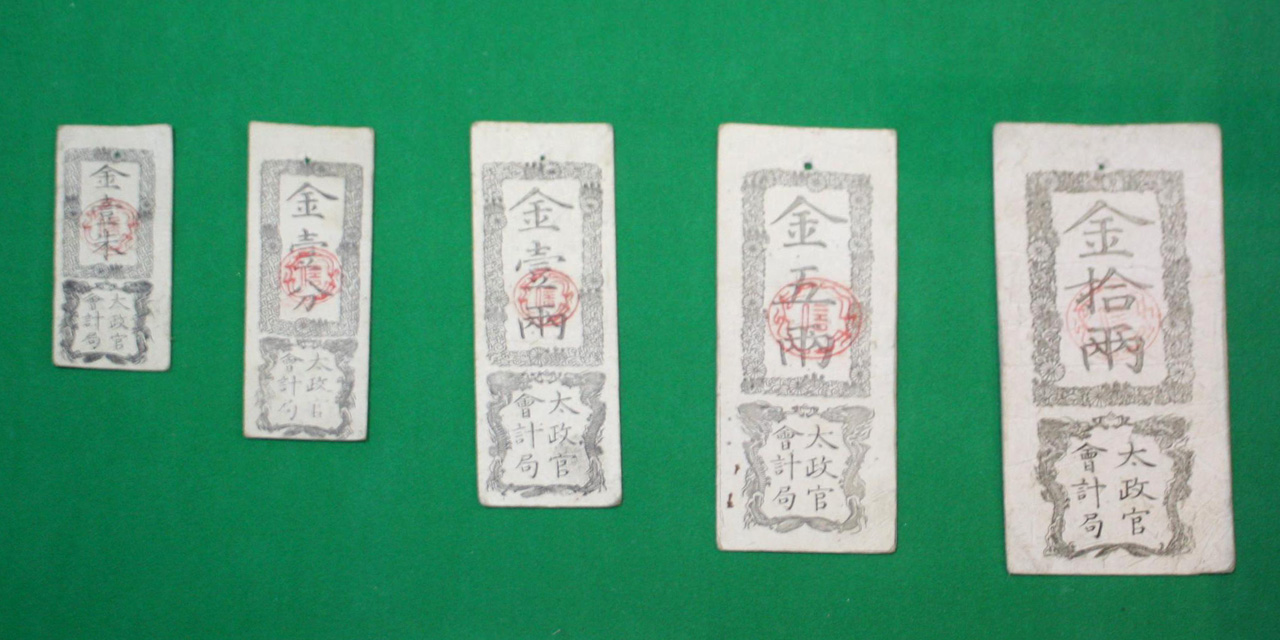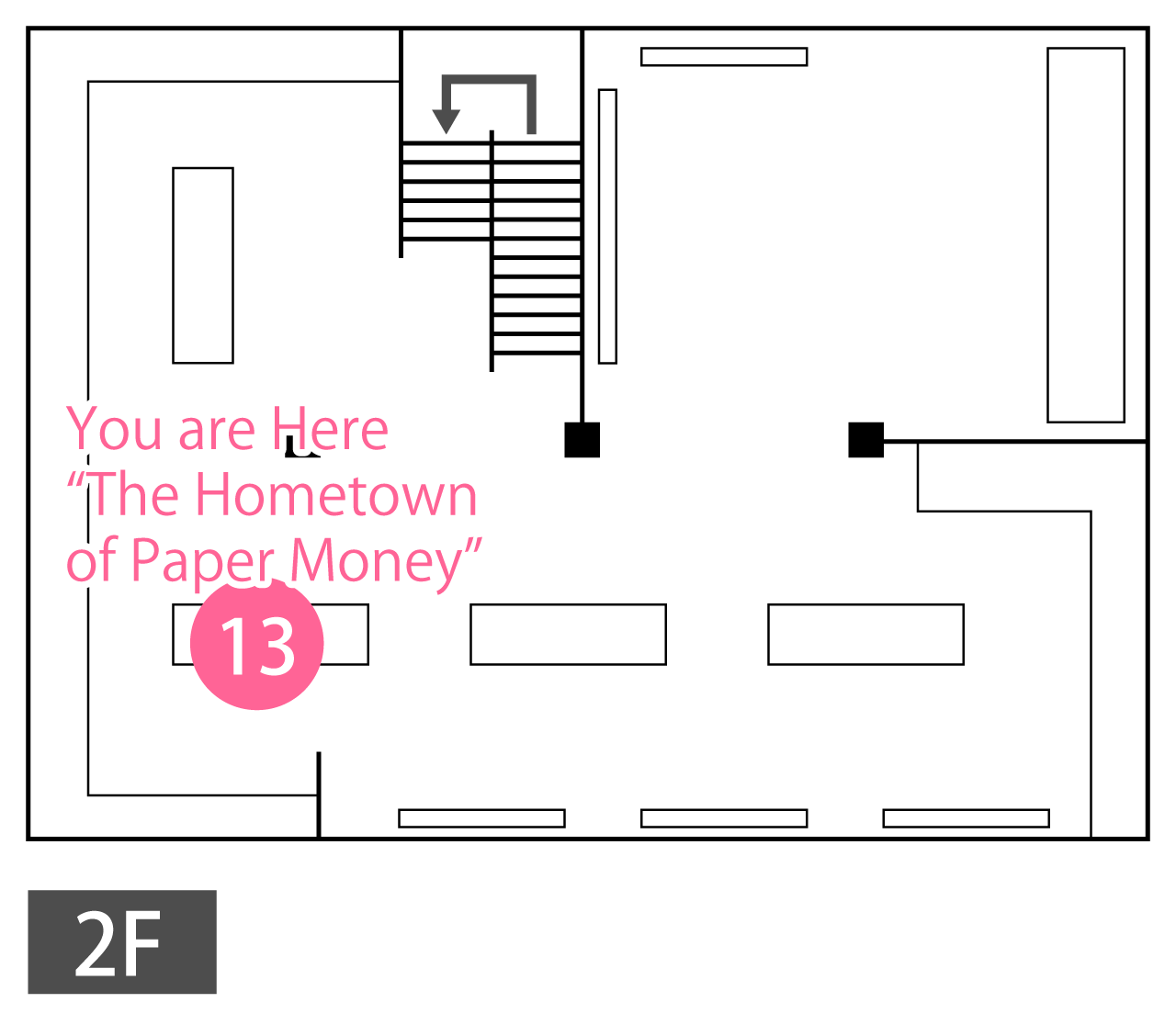 |
[13] The Hometown of Paper Money |

|
After learning about the history of Echizen washi paper itself, learn about the role Echizen's paper makers played in the history of paper money in Japan.
|
In 1875, the Ministry of Finance invited paper makers from Echizen to produce for them paper that was to be the most durable and the most suited for printing in the world, for use in Japan's banknotes. This new type of paper was called kyokushi paper.
Thin, sturdy, and water-resistant, kyokushi paper was suited for printing and excellent for anti-counterfeiting measures like dark watermarks, becoming part of the history of Japanese paper money starting with the banknotes issued by feudal domains.
|

| Paper Money Transitions are a Fight Against Counterfeits |
Starting with the very first banknotes issued by the Fukui domain, Japan has seen many different types of paper money. Today, we use the ¥1,000 note, the ¥2,000 note, the ¥5,000 note, and the ¥10,000 note - just four denominations — though the designs on them have changed little by little over time. New designs are introduced just as counterfeits begin to circulate; paper money transitions are a fight against counterfeits.
Worn-out banknotes are repaired by the Bank of Japan after they are checked to see if they are genuine or counterfeit; Japan's banknotes are of such high quality that counterfeiting rates are said to be exceptionally low compared to other countries. Collected banknotes judged to be genuine are shredded; however, because the paper doesn't dissolve in water and is slightly magnetized, it is apparently difficult to recycle it.
|


|
The year 1661 marked the Fukui domain's introduction of banknotes, the first in Japan. The high-quality paper used for these banknotes was produced in Goka village, made from Chinese parasol tree. The banknotes were issued in a number of denominations equivalent to monme coins (each having a value of 3.75 grams, or 0.13 oz., of silver), such as "ten monme," "three monme," or "one monme." The exchange of silver coins for paper banknotes is said to have begun with the appointment of Araki Shichirouemon and Komaya Zenuemon to lead the process for the Fukui Domain, with exchanges being handled in five locations, including Awatabe in modern-day Echizen city.
From the Edo era to the beginning of the Meiji era, various feudal domains and the territories of the shogun's direct vassals issued these feudal domain banknotes, which were only valid within the issuing domain. These feudal domain banknotes and the central government banknotes issued by the Meiji government's Ministry of Finance laid the foundation for today's Bank of Japan and yen notes.
|

| Light and Dark Watermarks |
A watermark is a design that is visible in paper when it's held in front of the sun. This delicate, elegant technique comes in two varieties: light watermarks and dark watermarks.
A light watermark is made by placing paper plastered with persimmon tannin, cut into the intended design, into a paper frame, or using lacquer to draw the design onto a paper frame, and then making paper in that frame. The result is that the paper comes out slightly thinner where the design was, allowing more light through than the surrounding paper.
A dark watermark is made in the opposite way, by making the paper thicker where the design is. However, production of paper with dark watermarks is prohibited in Japan, with the exception of the paper used to make banknotes.
|

Meiji-Era Central Government Banknotes |

|
Echizen is known as the hometown of paper money.
In the Edo era, the Fukui domain used Echizen washi paper to produce Japan's first feudal domain banknotes. In 1868, the first year of the Meiji era, the Meiji government issued its own central government banknotes, likewise made with Echizen washi paper. Unlike feudal domain banknotes, these could be used nationwide, and marked the first step toward today's yen banknotes.
|

| Floor Map |

|

|





